What is the CCTV system and how does it work
The CCTV system is of great importance in security, as it provides several benefits, such as:
- Crime prevention: the CCTV system can inhibit the actions of criminals, as they know that they are being observed and that they can be identified and punished. Furthermore, the CCTV system can help prevent fires, accidents, vandalism, theft, robbery, invasions, among other risks.
- Crime detection: the CCTV system can facilitate the detection of crimes, as it allows the recording and analysis of images of suspicious or illicit events. Images can be used as evidence or evidence for investigating and solving cases.
- Protection of people and assets: the CCTV system can protect people and assets, as it allows the monitoring and control of activities and movements in monitored environments. The CCTV system can alert you to dangerous or emergency situations and trigger appropriate security measures.
How to choose the best CCTV system for your case
To choose the best CCTV system for your case, you must take into account some factors, such as:
- Cost: the cost of the CCTV system depends on the type, quantity, quality and complexity of the equipment involved. You must evaluate the cost-benefit of the CCTV system, considering your budget, your needs and your objective.
- Quality: the quality of the CCTV system depends on the resolution, sharpness, luminosity, color, contrast and angle of the images captured by the cameras. You must choose the CCTV system that offers the best image quality, according to your purpose and your environment.
- Capacity: the capacity of the CCTV system depends on the number, size, speed and duration of images transmitted and stored by the equipment. You must choose the CCTV system that has enough capacity to meet your demands and expectations.
- Integration: the integration of the CCTV system depends on the compatibility, connectivity, interactivity and functionality of the equipment with other systems, such as alarms, sensors, gates, locks, intercoms, among others. You should choose the CCTV system that can integrate with other systems to increase security efficiency and effectiveness.
- Maintenance: maintenance of the CCTV system depends on the durability, reliability, availability and technical assistance of the equipment. You must choose a CCTV system that is well maintained, in order to avoid failures, defects, loss or damage to equipment.
Examples of CCTV systems available on the market
There are several CCTV systems available on the market, which vary in terms of type, brand, model, price, quality, capacity, integration and maintenance. Some examples of CCTV systems are:
- Basic analog CCTV system: it is a simple and cheap CCTV system that uses analog cameras, coaxial cables, TV monitors and tape or disk recorders. It is suitable for small, simple environments that do not require high image quality or large storage capacity.
- Advanced analog CCTV system: This is a more sophisticated and expensive CCTV system that uses high-resolution analog cameras, coaxial cables, LCD or LED monitors and disc recorders. It is suitable for medium and complex environments, which require better image quality or greater storage capacity.
- Basic digital CCTV system: is a modern and affordable CCTV system that uses digital cameras, network or wireless cables, computer or smartphone monitors, and disk or cloud recorders. It is recommended for small, simple environments that require good image quality or good storage capacity.
- Advanced digital CCTV system: is an innovative and expensive CCTV system that uses high-definition digital cameras, network or wireless cables, computer or smartphone monitors, and disk or cloud recorders. It is suitable for medium and complex environments, which require excellent image quality or excellent storage capacity.
Tips for installing and using the CCTV system efficiently
To install and use the CCTV system efficiently, you must follow some tips, such as:
- Positioning: you must position the cameras at strategic points in the environment, in order to cover the areas of greatest interest and risk, avoiding blind spots, obstacles, reflections or shadows. You must adjust the angle, height, distance and focus of the cameras in order to obtain the best images possible.
- Lighting: you must adequately light the environment to ensure the visibility and clarity of the images captured by the cameras. You should avoid excessive or insufficient lighting, which can harm the quality of the images. You should opt for cameras with infrared, which can capture images in low light or dark conditions.
- Resolution: you must choose the appropriate resolution for the images captured by the cameras, in order to meet your needs and your objective. You must take into account that the higher the resolution, the higher the quality, but also the greater the consumption of bandwidth and storage space. You should opt for cameras with a resolution of at least 720p (HD) or 1080p (Full HD).
- Storage: you must choose the storage method and time for the images captured by the cameras, in order to meet your demands and expectations. You must take into account that the longer the storage time, the greater the capacity required. You should opt for recorders with at least 1TB hard drive or cloud with unlimited storage plan.
- Access: you must choose the mode and level of access to the images captured by the cameras, in order to guarantee their security and privacy. You must take into account that the greater the access, the greater the risk of invasion or interception. You must opt for systems with password, encryption, firewall, VPN, among other protection features.
Care and precautions for the CCTV system
To use the CCTV system responsibly and ethically, you must take some care and precautions, such as:
- Legislation: you must respect current legislation on the use of the CCTV system, which may vary according to the country, state, municipality or sector. You must consult the rules and laws that regulate the CCTV system, and follow the guidelines and recommendations of the competent bodies.
- Privacy: you must respect the privacy of people who are monitored by the CCTV system, who have the right to know that they are being observed and to have access to images that concern them. You must inform and signal the existence and purpose of the CCTV system, and request the consent of the people involved, when necessary.
- Security: You must protect the security of the images that are captured by the CCTV system, which are confidential and sensitive. You must prevent unauthorized access, improper disclosure, improper alteration or improper destruction of images. You must adopt protection measures, such as password, encryption, firewall, VPN, among others.
- Ethics: you must act ethically and respectfully when using the CCTV system, which is a security tool and not a spying or control tool. You must use the CCTV system only for its intended and authorized purposes, and not for illegal, immoral or abusive purposes. You must avoid using the CCTV system to violate people's rights, freedoms, dignity or privacy.
Conclusion
The CCTV system is a set of cameras, monitors, recorders and other equipment that allows the capture, transmission and storage of images of a given environment. The CCTV system is widely used for security purposes, as it allows the monitoring and surveillance of places such as homes, businesses, industries, schools, hospitals, banks, among others.
The CCTV system can be divided into two types: analog and digital. The analog system uses coaxial cables to transmit images from cameras to monitors and recorders, which use magnetic tapes or optical disks to store the images. The digital system uses network or wireless cables to transmit images from cameras to monitors and recorders, which use hard drives or clouds to store the images. The digital system offers advantages such as higher image quality, greater storage capacity, greater ease of access and integration with other systems.
The CCTV system is of great importance in security, as it provides several benefits, such as: crime prevention, crime detection, protection of people and property. To choose the best CCTV system for your case, you must take into account some factors, such as: cost, quality, capacity, integration, maintenance. There are several CCTV systems available on the market, which vary in terms of type, brand, model, price, quality, capacity, integration and maintenance. To install and use the CCTV system efficiently, you must follow some tips, such as: positioning, lighting, resolution, storage, access. To use the CCTV system responsibly and ethically, you must take some care and precautions, such as: legislation, privacy, security, ethics.
We hope this article has been useful and enlightening for you. If you liked it, share it with your friends and family. If you have any questions, suggestions or comments, leave your message below. And if you want to know more about the CCTV system and its importance in security, check out the frequently asked questions below.
Common questions
- What is CCTV?
- CCTV is the acronym for Closed Circuit Television, which is a set of cameras, monitors, recorders and other equipment that allow the capture, transmission and storage of images of a given environment.
- What is the CCTV system for?
- The CCTV system serves security purposes, as it allows the monitoring and surveillance of places such as homes, businesses, industries, schools, hospitals, banks, among others.
- What are the types of CCTV systems?
- The types of CCTV systems are: analog and digital. The analog system uses coaxial cables to transmit images from cameras to monitors and recorders, which use magnetic tapes or optical disks to store the images. The digital system uses network or wireless cables to transmit images from cameras to monitors and recorders, which use hard drives or clouds to store the images.
- What are the security benefits of a CCTV system?
- The security benefits of the CCTV system are: crime prevention, crime detection, protection of people and property.
- How to choose the best CCTV system for my case?
- To choose the best CCTV system for your case, you must take into account some factors, such as: cost, quality, capacity, integration, maintenance. You must evaluate the cost-benefit of the CCTV system, considering your budget, your needs and your objective. You must choose the CCTV system that offers the best image quality, according to your purpose and your environment. You must choose the CCTV system that has enough capacity to meet your demands and expectations. You should choose the CCTV system that can integrate with other systems to increase security efficiency and effectiveness. You must choose a CCTV system that is well maintained, in order to avoid failures, defects, loss or damage to equipment.


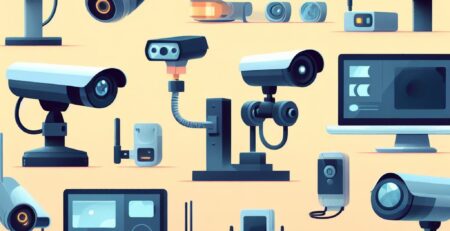


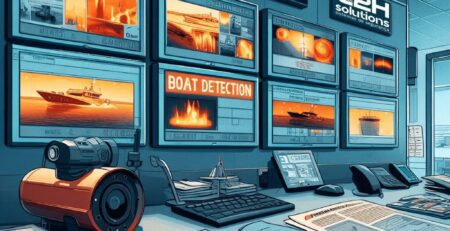
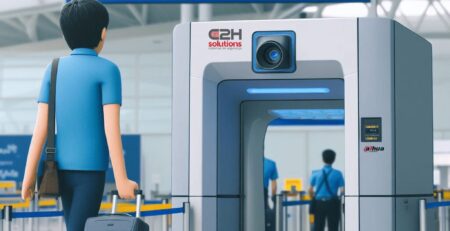
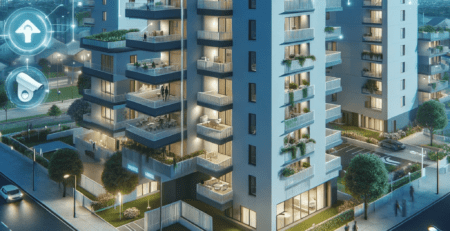

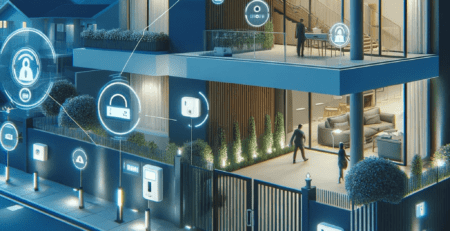


Comments (14)
💡 O sistema de CFTV é uma ferramenta essencial para a segurança moderna, proporcionando tranquilidade e proteção em diversas situações. Entender como ele funciona pode fazer toda a diferença na sua estratégia de segurança!
👉 Quer aprofundar seus conhecimentos sobre #Tecnologia e Segurança?
Explore mais conteúdos exclusivos em nosso blog na seção #Tecnologia e Segurança.
🤝 Envie um email para nosso departamento comercial! comercial@c2hsolutions.com.br
💡 O sistema de CFTV é uma ferramenta poderosa que não só garante segurança, mas também promove a tranquilidade nas empresas e residências. Conhecer suas funcionalidades pode fazer toda a diferença na proteção do que mais importa!
👉 Quer aprofundar seus conhecimentos sobre #Tecnologia e Segurança? Explore mais conteúdos exclusivos em nosso blog na seção #Tecnologia e Segurança.
🤝 Envie um email para nosso departamento comercial! comercial@c2hsolutions.com.br
💡 O sistema de CFTV é uma poderosa ferramenta que não só proporciona segurança, mas também atua na prevenção de incidentes. Com a tecnologia certa, sua eficácia pode ser maximizada!
👉 Quer aprofundar seus conhecimentos sobre #Tecnologia e Segurança? Explore mais conteúdos exclusivos em nosso blog na seção #Tecnologia e Segurança.
🤝 Envie um email para nosso departamento comercial! comercial@c2hsolutions.com.br
💡 O sistema de CFTV é uma ferramenta poderosa que não só garante a segurança, mas também proporciona tranquilidade em diversas situações. Conhecer suas funcionalidades é o primeiro passo para uma proteção eficaz!
👉 Quer aprofundar seus conhecimentos sobre #Tecnologia e Segurança? Explore mais conteúdos exclusivos em nosso blog na seção #Tecnologia e Segurança.
🤝 Envie um email para nosso departamento comercial! comercial@c2hsolutions.com.br
💡 O sistema de CFTV é uma ferramenta poderosa para garantir a segurança e monitoramento eficaz de ambientes. Compreender suas funcionalidades pode transformar a proteção do seu patrimônio!
👉 Quer aprofundar seus conhecimentos sobre #Tecnologia e Segurança? Explore mais conteúdos exclusivos em nosso blog na seção #Tecnologia e Segurança.
🤝 Envie um email para nosso departamento comercial! comercial@c2hsolutions.com.br
💡 O sistema de CFTV é uma ferramenta fundamental para garantir a segurança em diversos ambientes, proporcionando monitoramento em tempo real e proteção eficaz. Ao entender seu funcionamento, você pode otimizar a segurança do seu espaço!
👉 Quer aprofundar seus conhecimentos sobre #Tecnologia e Segurança?
Explore mais conteúdos exclusivos em nosso blog na seção #Tecnologia e Segurança.
🤝 Envie um email para nosso departamento comercial! comercial@c2hsolutions.com.br
💡 O sistema de CFTV é uma ferramenta essencial para garantir a segurança em diversos ambientes, proporcionando monitoramento em tempo real e proteção contra ameaças. Invista em tecnologia avançada e fique tranquilo! 👉 Quer aprofundar seus conhecimentos sobre #Tecnologia e Segurança? Explore mais conteúdos exclusivos em nosso blog na seção #Tecnologia e Segurança. 🤝 Envie um email para nosso departamento comercial! comercial@c2hsolutions.com.br
💡 O sistema de CFTV é uma ferramenta essencial para a proteção e monitoramento eficaz em diversos ambientes. A tecnologia atual oferece soluções inovadoras que podem transformar a segurança do seu espaço! 🔍
👉 Quer aprofundar seus conhecimentos sobre #Tecnologia e Segurança? Explore mais conteúdos exclusivos em nosso blog na seção #Tecnologia e Segurança.
🤝 Envie um email para nosso departamento comercial! comercial@c2hsolutions.com.br
#Tecnologia e SegurançaO que é o sistema de CFTV e como funciona#Tecnologia e SegurançaSegurança com Inovação e Confiabilidade – C2H Solutions
#Tecnologia e SegurançaO que é o sistema de CFTV e como funciona#Tecnologia e SegurançaSegurança com Inovação e Confiabilidade – C2H Solutions
#Tecnologia e SegurançaO que é o sistema de CFTV e como funciona#Tecnologia e SegurançaSegurança com Inovação e Confiabilidade – C2H Solutions
#Tecnologia e SegurançaO que é o sistema de CFTV e como funciona#Tecnologia e SegurançaSegurança com Inovação e Confiabilidade – C2H Solutions
#Tecnologia e SegurançaO que é o sistema de CFTV e como funciona#Tecnologia e SegurançaSegurança com Inovação e Confiabilidade – C2H Solutions
#Tecnologia e SegurançaO que é o sistema de CFTV e como funciona#Tecnologia e SegurançaSegurança com Inovação e Confiabilidade – C2H Solutions